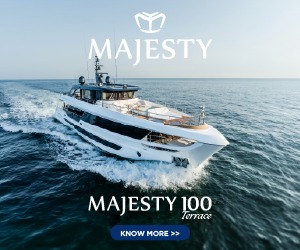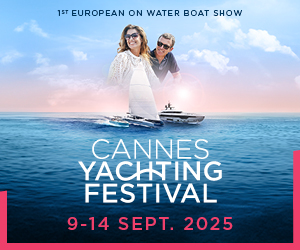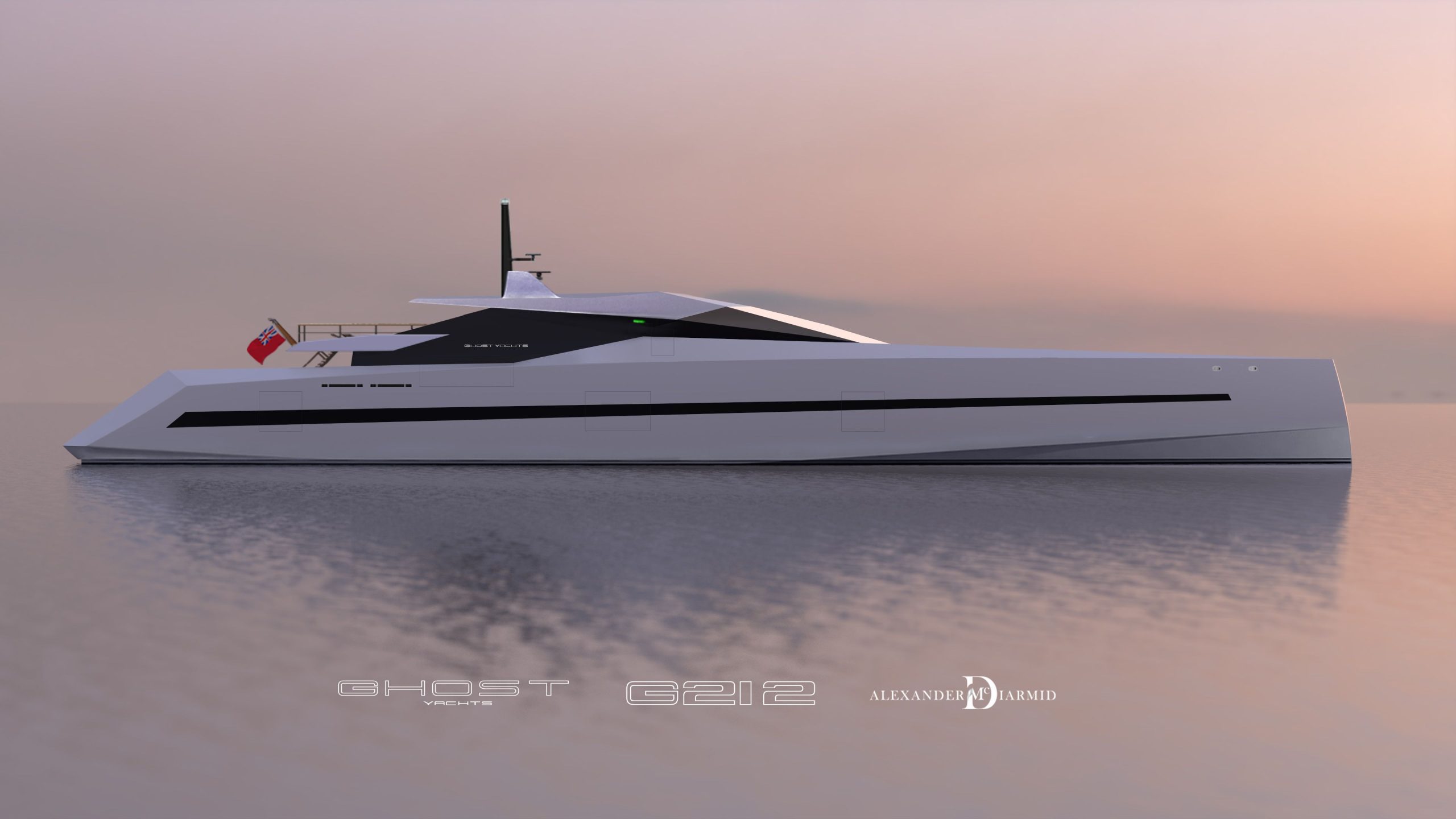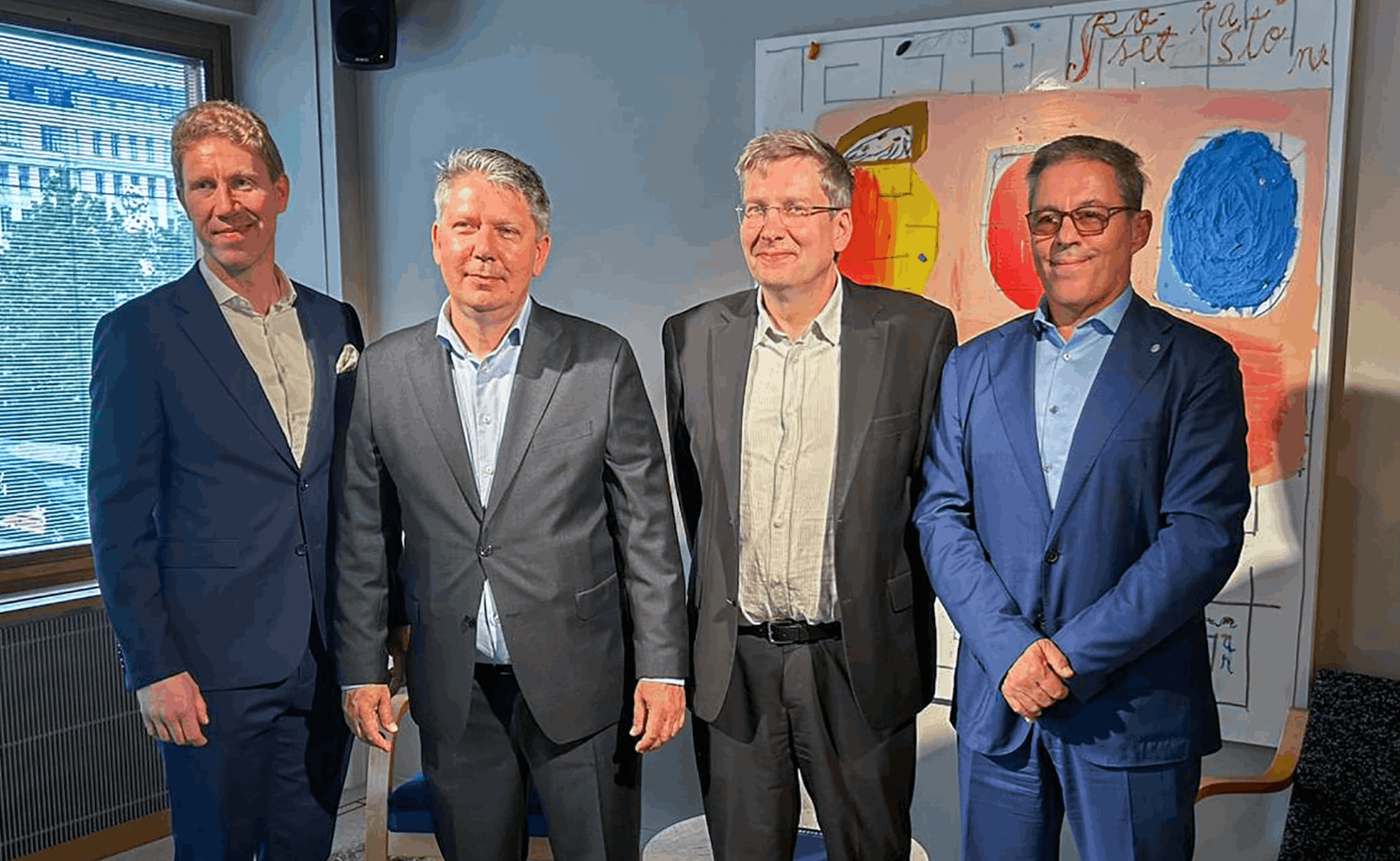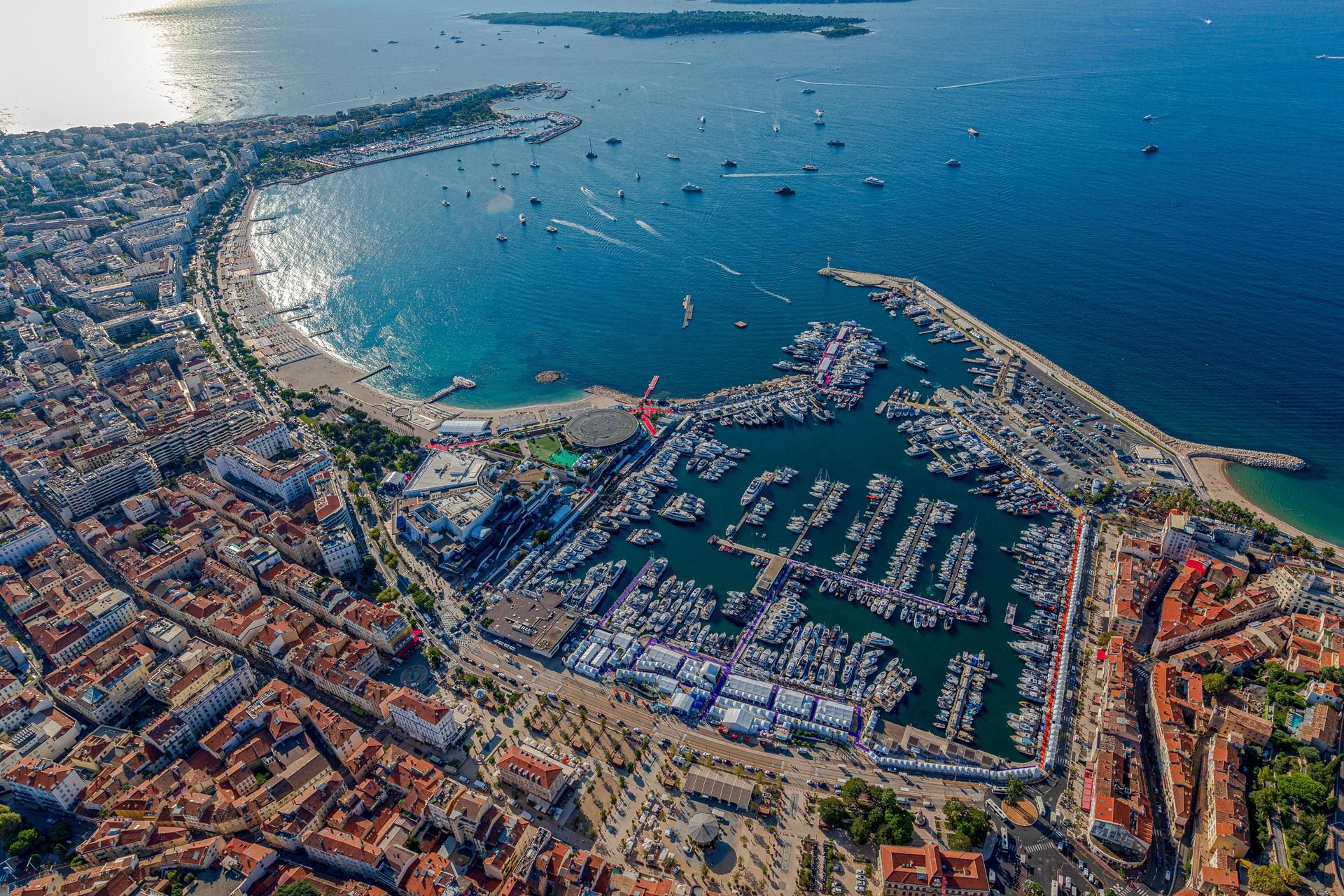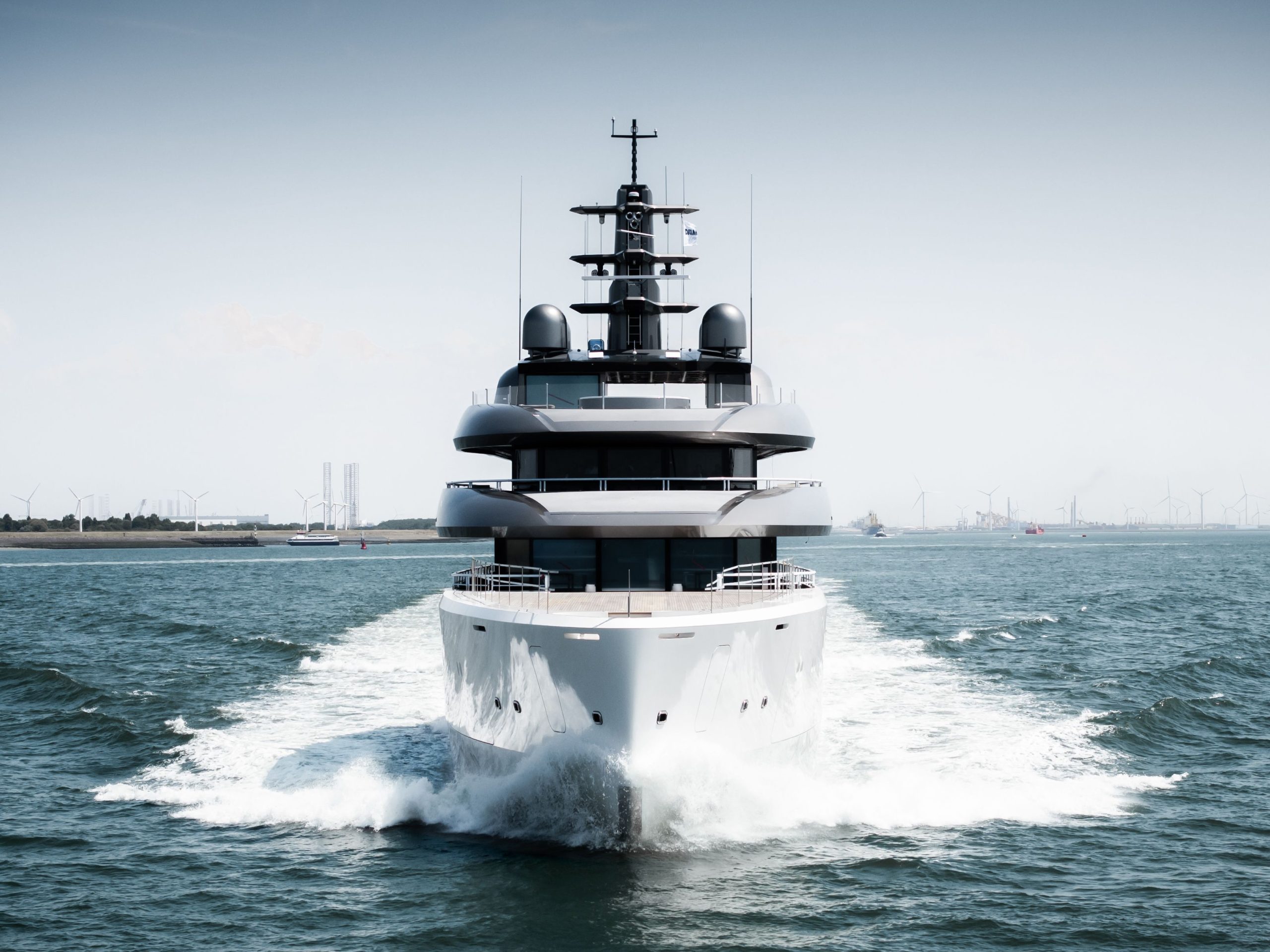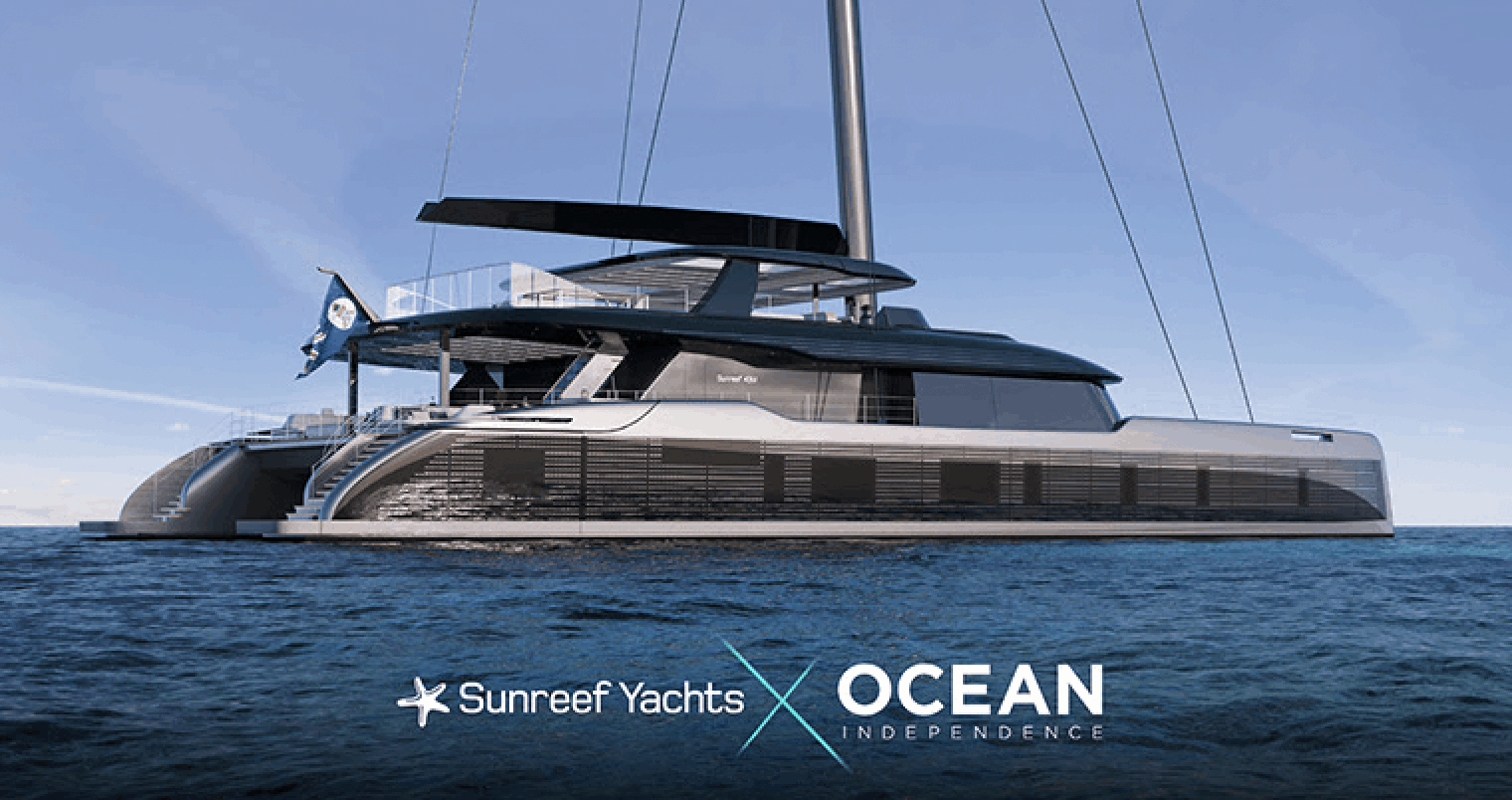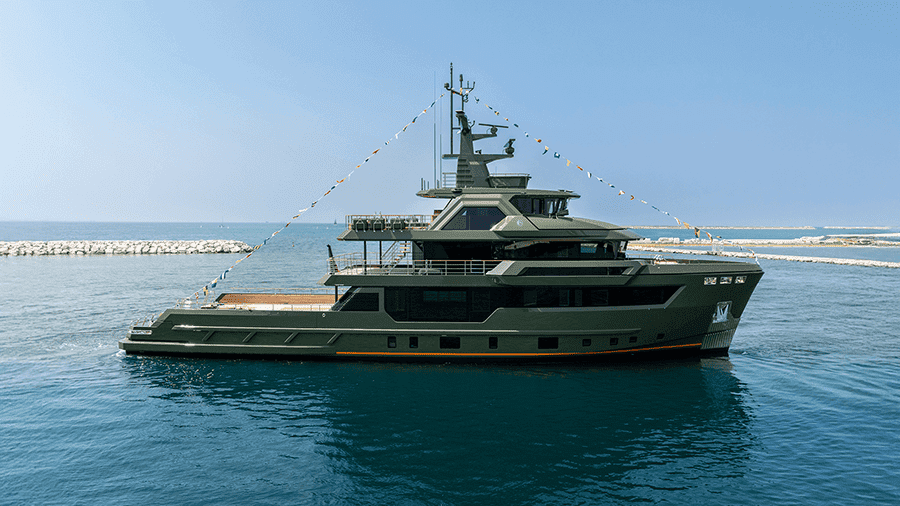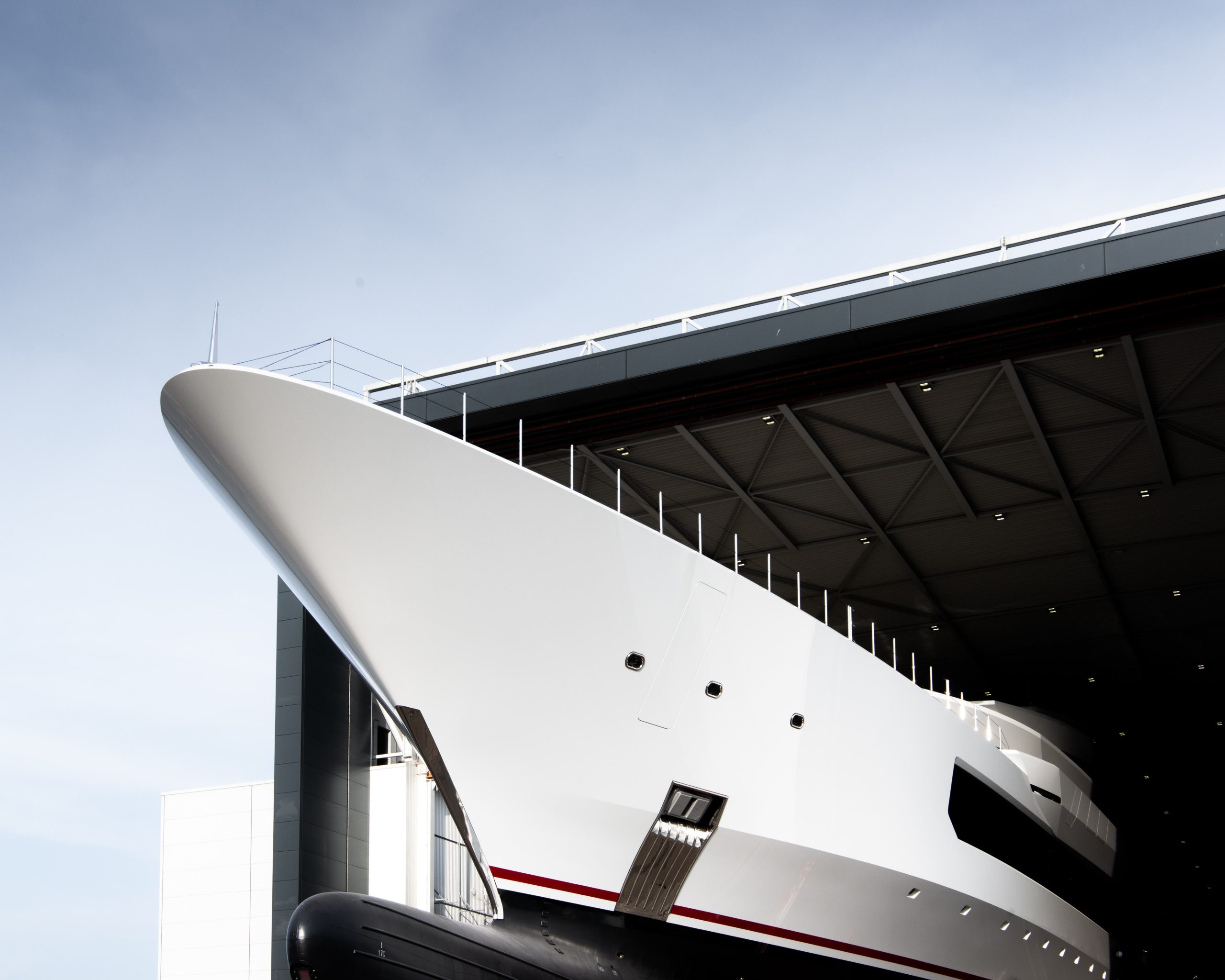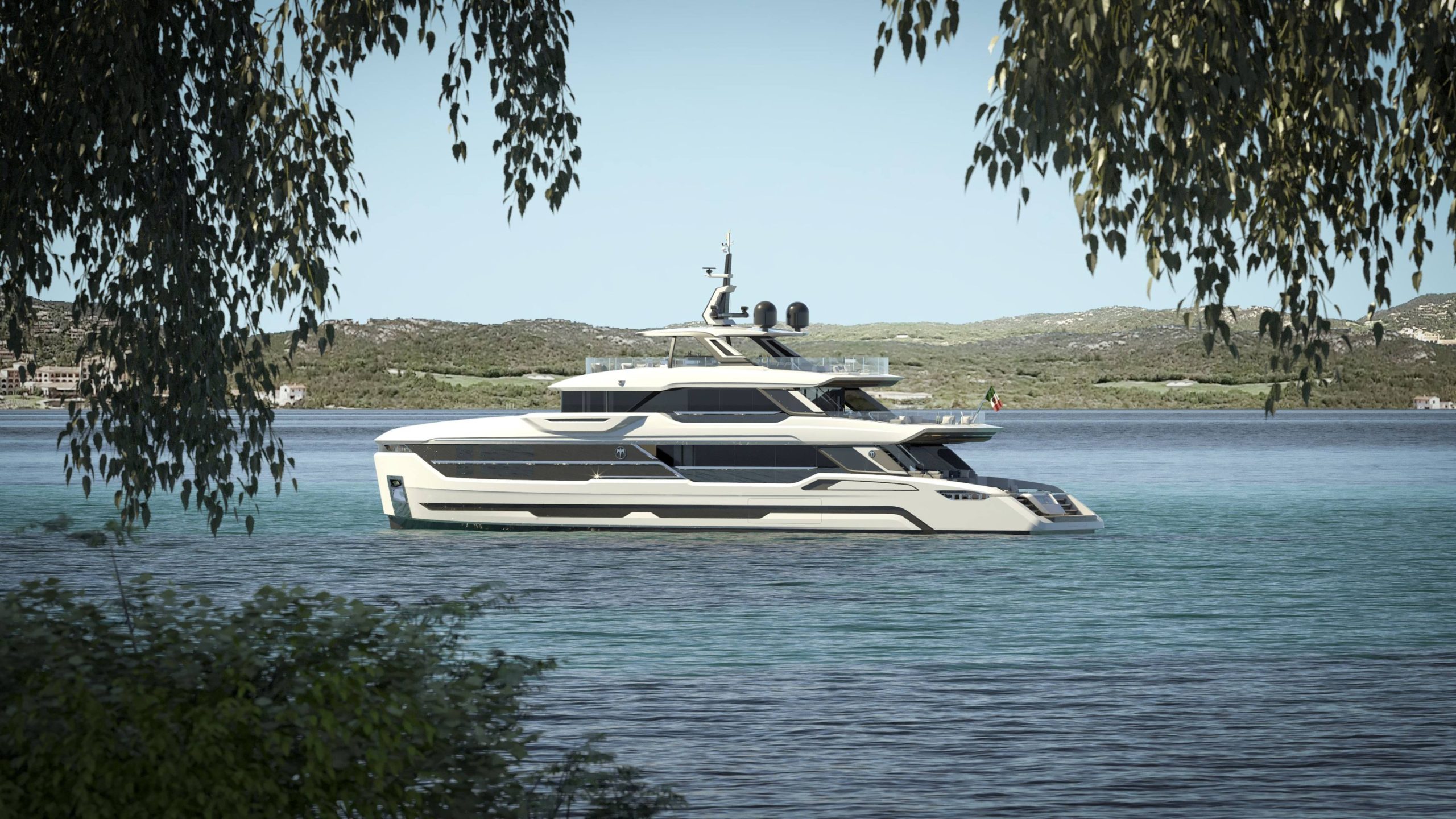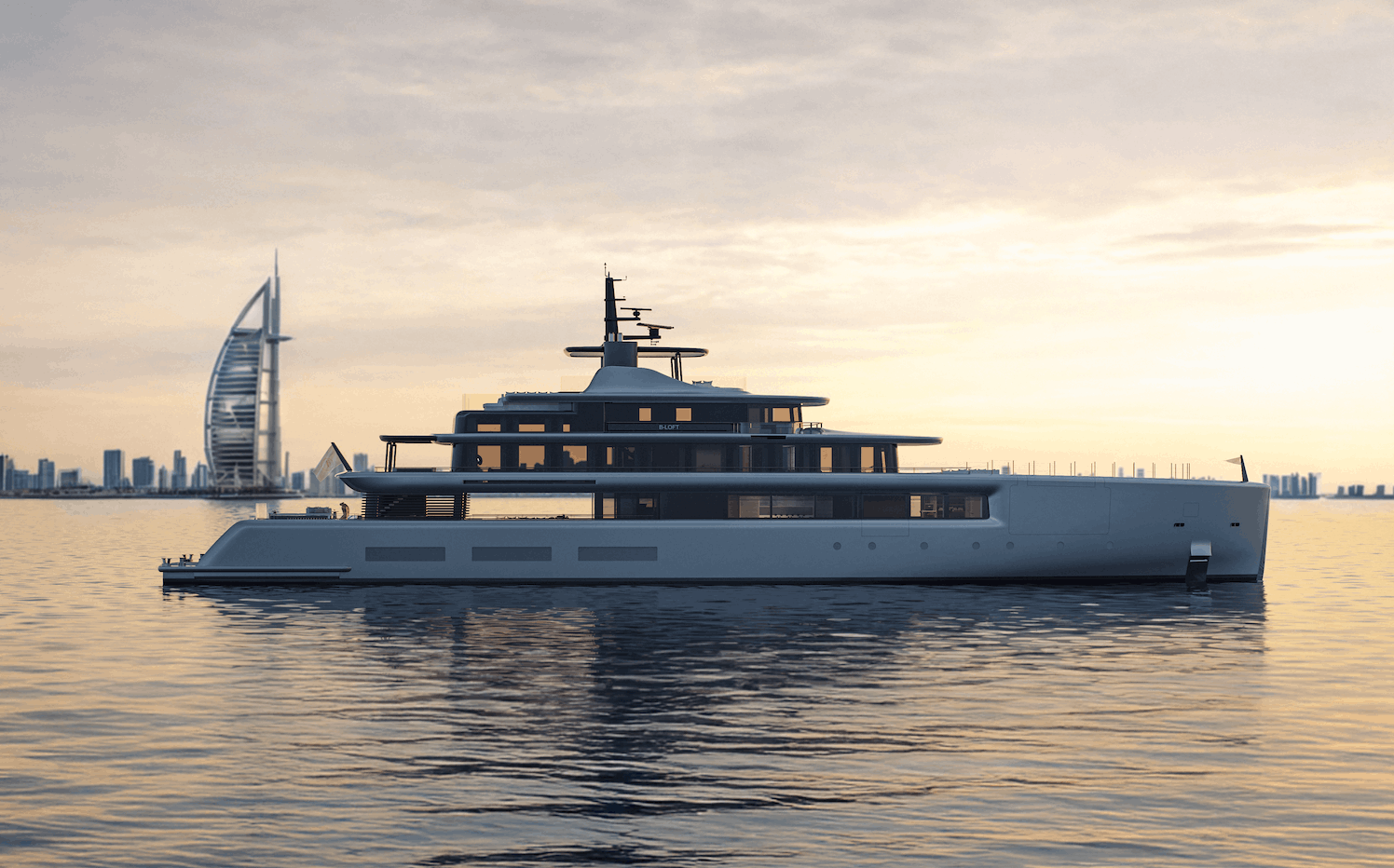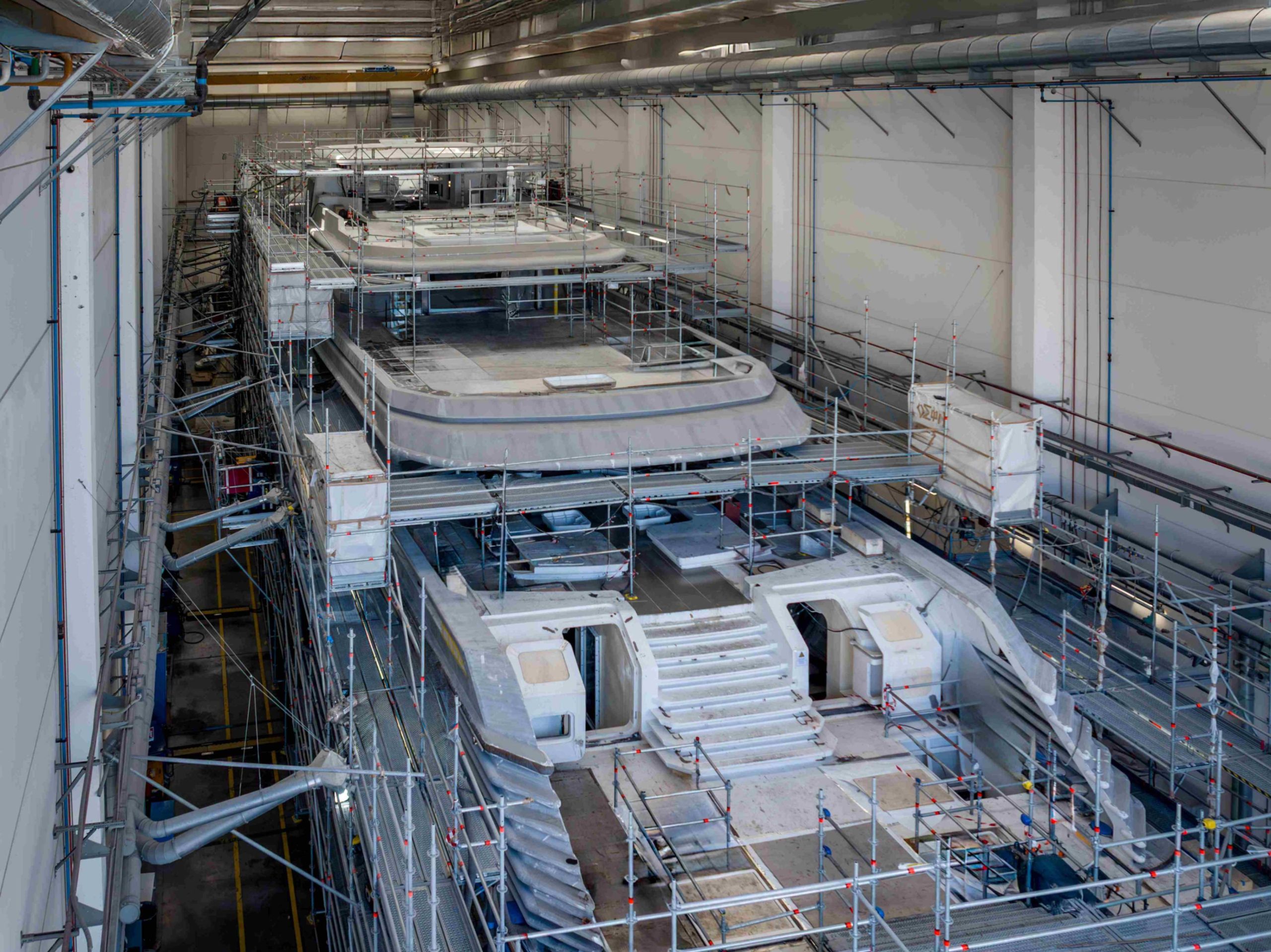WATER REVOLUTION FOUNDATION LAUNCHES YACHTING’S ROADMAP 2050
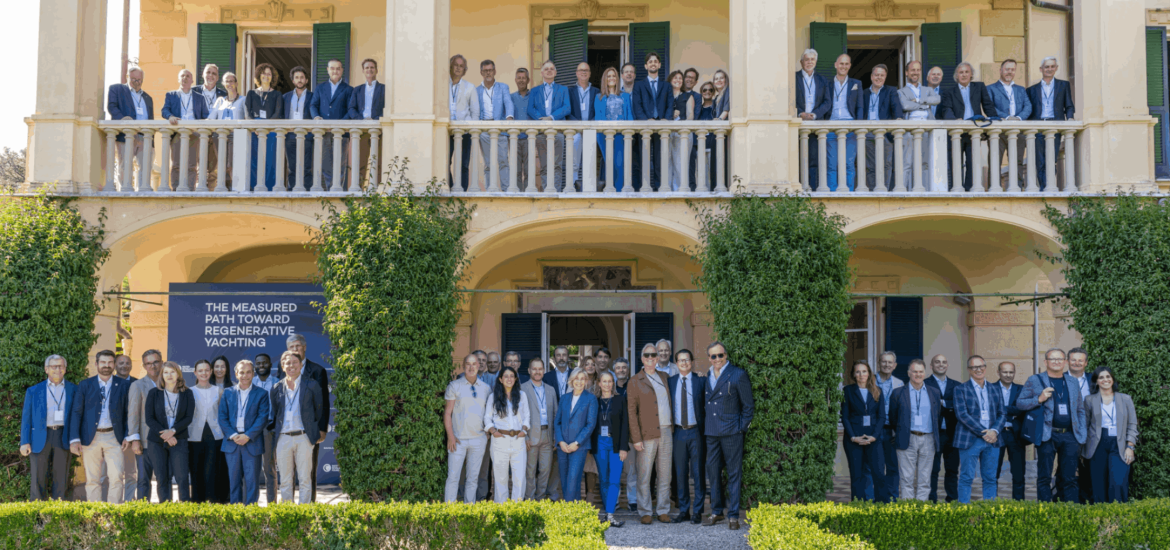
Sanlorenzo hosted the third edition of Water Revolution’s Business Leaders Event in Lerici – Italy. CEOs of top 60 industry leading companies were brought together to collectively discuss the adoption of a Roadmap 2050 for a regenerative future – a strategic framework outlining quantified targets. While commitment to the Roadmap remained voluntary, it is aimed at achieving industry-wide net zero emissions by 2050. Guided by the 3R model (Reduce, Remove, Restore), actions were described for each stage of a yacht’s life cycle: Design, Build, Operation and Refit, touching and engaging every single stakeholder in yachting. It promises industry progress ahead of legislative provisions and a credible execution of a proactive decarbonization strategy.
The developed Roadmap 2050 is aimed to serve as compass to navigate unchartered waters together. This whitepaper distills the core insights of this monumental event, aiming to inform and onboard the wider industry on what the industry leaders attending this event committed to and embrace as strategic way forward to future-proof our yachting industry. The four main takeaways are covered here, providing a concise overview of the industry’s trajectory and the collective effort required.
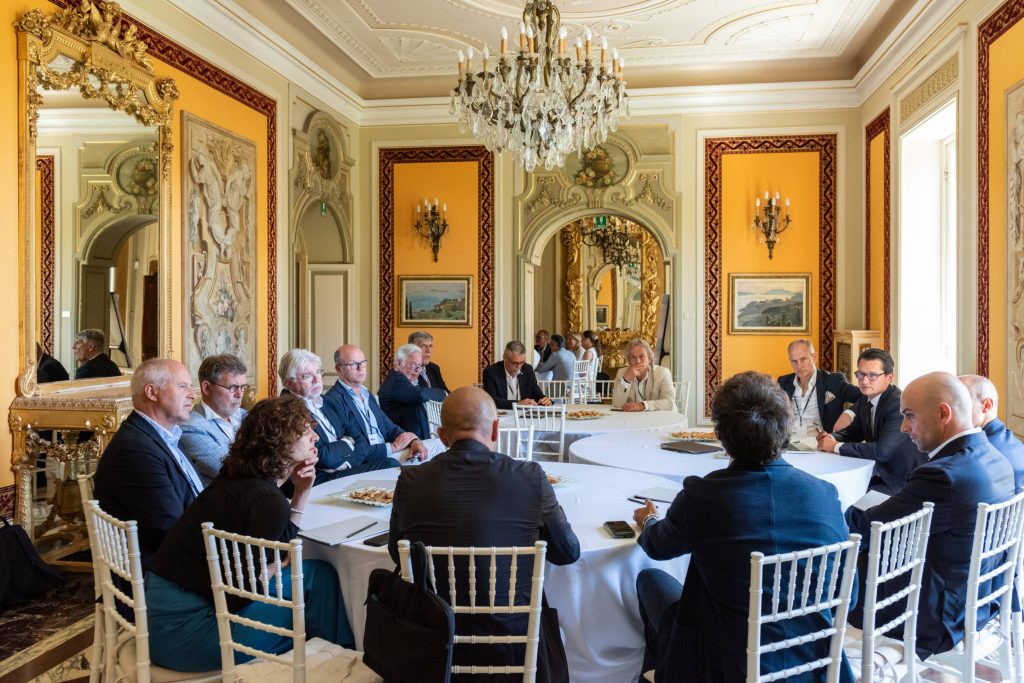
Without a collectively adopted strategy and effective, well-coordinated actions, the superyacht industry faces increasing scrutiny regarding its environmental footprint and risks various external forces. The Business Leaders Event served as a crucial forum to address these challenges and agreeing on an effective way forward: the adoption of the Roadmap 2050. The event generated several critical insights, reflecting the current state and future direction of sustainability within the superyacht sector.
Industry Roadmap: Yachting is not the first sector to adopt a Roadmap, but perhaps it is in maritime. This voluntary guideline with quantified targets accomplishes net-zero by 2050, engaging all yachting stakeholders. First it is about taking impact ownership and responsibility for one’s share and then to take required actions to reduce, remove and restore. The discussions were passed the IF we need a Roadmap, but on HOW we can successfully adopt one.
Education & Collaboration: It is crucial to have a common understanding of the challenge, and adopt scientific approaches translated into yachting methods & tools. A fragmented industry is lethal, collaboration and coordinated actions is essential for systemic change, particularly towards clients who expect industry to “just take care of it”.
Data-Driven Approach: A robust cross-industry data collection & monitoring system are crucial to guide the industry’s course, establish measurable KPIs, and ensure accountability for progress towards decarbonization. Lifecycle Approach: With a growing fleet, solutions must extend beyond new builds to significantly reduce the ecological impact of the entire sector. Design, build, operation and refit (product and process) are the 4 main focus areas.
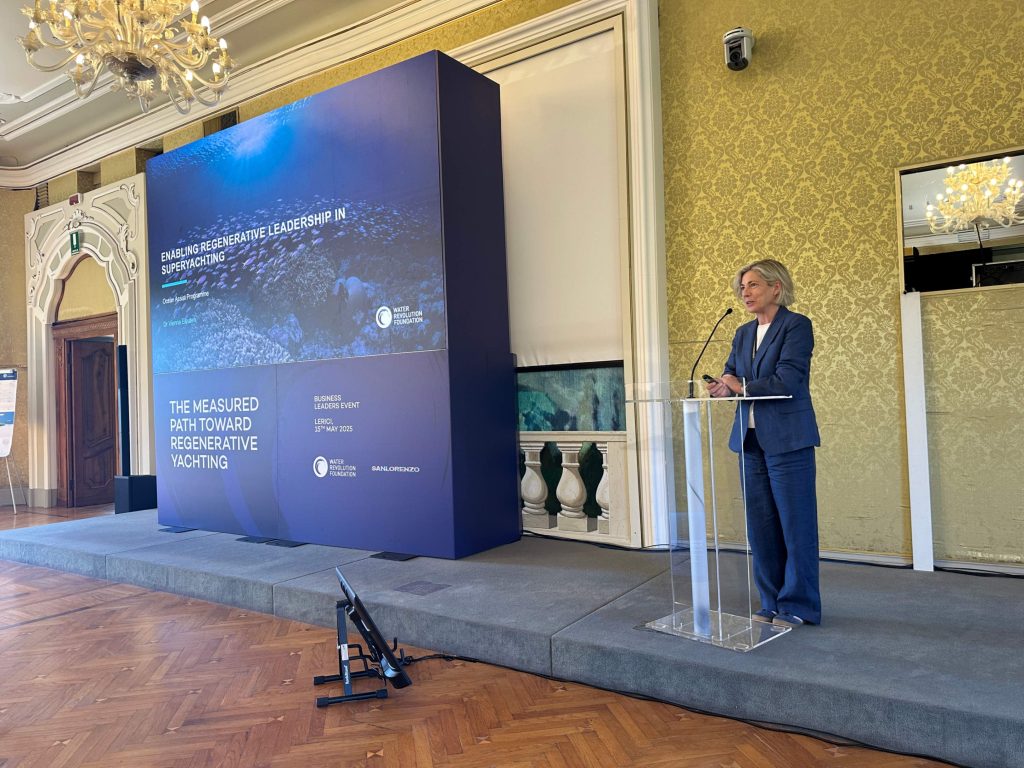
Data-Driven Approach: A robust cross-industry data collection & monitoring system are crucial to guide the industry’s course, establish measurable KPIs, and ensure accountability for progress towards decarbonization. Lifecycle Approach: With a growing fleet, solutions must extend beyond new builds to significantly reduce the ecological impact of the entire sector. Design, build, operation and refit (product and process) are the 4 main focus areas.
The Roadmap 2050 is aimed to be yachting’s vision. With a well-coordinated and collective approach, quantified goals will engage and activate each industry stakeholder group. It goes beyond regulatory thresholds, yet remains voluntary. Consider it as a compass for our industry to navigate unchartered waters together for future-proofing our industry.
Let’s face it, today the yachting industry has no common vision on how it plans to decarbonize itself. The yachts fall under IMO regulations, but are still generally exempted as thresholds sit at 5,000 GT for most environmental regulations. Similar situation for on-land, apart from local restrictions, with EU reporting regulations now being postponed or flexed, self-regulation is the way forward. This allows us to stay at the helm, charting our own course towards net-zero.
Committing to this Roadmap will ensure yachting companies to be environmentally future-proof. This Roadmap will not only decarbonize yachting, it will guide to become regenerative, meaning: having an overall positive footprint rather than just reducing or compensating the negative. As such we can reach at least net-zero or indeed beyond, called nature positive. Good for the planet and for the industry’s perception.
What you are looking at above is: the negative impact of our industry is indicated below the x-axes and divided over the four life cycle stages of a yacht, the coloured parts reflect the relative magnitude of each stage in 2025. Mirrored above the x-axes is the positive impact investment we need to make to compensate the negative impact. The more we manage to reduce impact towards 2050, the less impact needs to be compensated. Should we go beyond just offsetting our negative impacts at any time, we can achieve a nature-positive situation, in other words, become regenerative. A logical place to be in fact, given that yachting directly relies on the health of the oceans for the lifestyle it provides in.
Core themes the discussions at the Business Leaders Event revolved around several interconnected themes, each shedding light on the complexities and necessities of the industry’s sustainability journey.
Strategic vision and long-term commitment to decarbonization the event showcased a strategic, long-term commitment to decarbonization, with the 2050 Roadmap providing a clear direction. Some proactive shipyards invest in research, development, and implementation of sustainable solutions, acknowledging inherent risks but prioritizing long-term viability. The industry’s proactive stance is evidenced by creating and adopting a quantified path to net-zero in 2050.
The imperative of Industry-wide collaboration systemic change requires coordinated action across all industry stakeholders—designers, shipyards (new & refit), suppliers, operators, marinas, class & governmental bodies.
The success of pioneering efforts, such as securing methanol licenses in Italian marinas, was attributed to collective work. The current lack of a central industry database for adding environmental impact, with data residing in “silos” highlights the critical need for an industry-wide monitoring system and the establishment of common, agreed-upon KPIs to track collective progress and benchmark individual efforts. Attendees showed strong commitment to this collaborative roadmap, acknowledging that while roadblocks exist, the industry needs to find solutions. The event served as a valuable platform for fostering this collaboration and setting a shared strategic agenda.
Data-driven decarbonization and operational realities a rigorous scientific approach and robust data collection are critical for guiding the industry’s decarbonization efforts. This involves moving beyond qualitative intentions to quantitative goals, using KPIs to measure progress across all four lifecycle stages of a yacht: design, build, operation, and refit. Operational data reveals that existing fleets, particularly their profiles (10% cruising, 90% stationary), require specific, tailored solutions e.g. renewable shore power. Detailed analysis of build and refit processes highlights significant waste generation and energy consumption, with natural gas being a major non-renewable source. The importance of self-monitoring, transparency, and credibility through regular reporting and third-party audits was highlighted. Challenges include data overload and the need to identify the top most impactful items for focused reporting.
Pioneering sustainable technology and its challenges the industry’s drive for technological innovation, exemplified by the fuel cell testbed, faces significant hurdles. These include regulatory gaps and lack of bunkering infrastructure for new fuels like green methanol. Despite these challenges, the sector is looking forward to the announced dual-fuel engines. Green methanol, produced by combining hydrogen with captured CO2, offers a “zero net” fuel solution that is easy to transport.
Early analyses show that while build-time environmental impact is significant, the life cycle emissions of yachts quickly surpass them (e.g., 7 years for a 150-foot sailing superyacht), underscoring the need for comprehensive solutions. The yachting industry has the potential to be a proving ground for the future of sustainable shipping if it would be more open to test new technologies and solutions. Apart from the product, there is room for much improvement within the process, which is likely to also reduce cost.
As part of the workshop sessions, participants were divided into four key stakeholder groups — Design, Build, Refit, and Operations — to collaboratively define how to implement the Roadmap 2050. Each group explored several core dimensions: identifying impact ownership and allocation; outlining collective mitigation efforts and potential alternatives; setting criteria for consistent data submission based on fixed KPIs; and proposing approaches for internalizing environmental costs beyond purely economic considerations.












